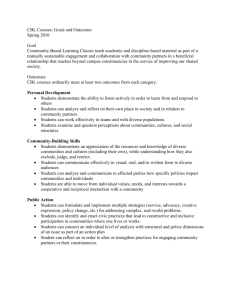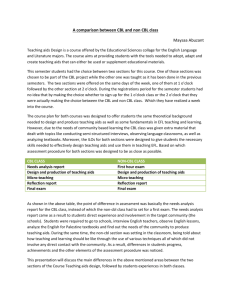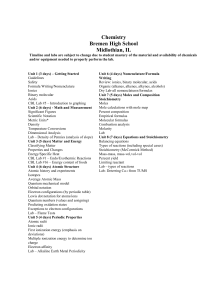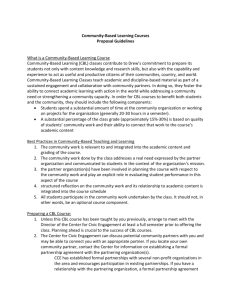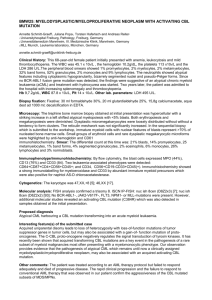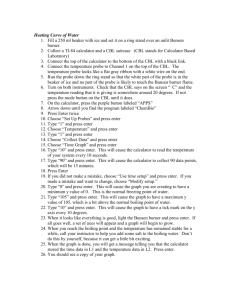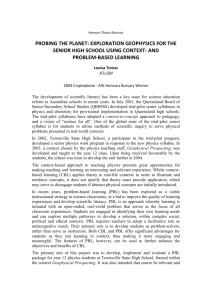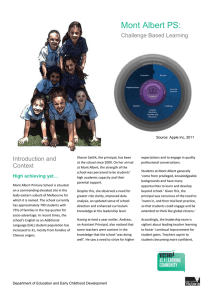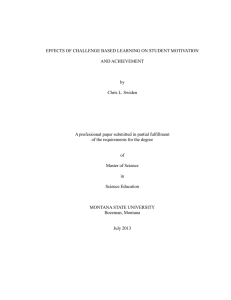cbl
advertisement
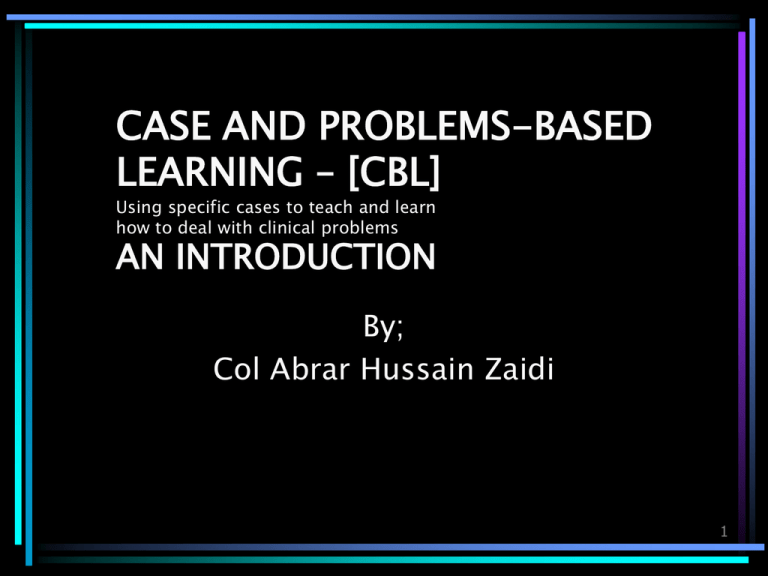
CASE AND PROBLEMS-BASED LEARNING – [CBL] Using specific cases to teach and learn how to deal with clinical problems AN INTRODUCTION By; Col Abrar Hussain Zaidi 1 SEQUENCE 1. 2. 3. 4. 5. 6. 7. 8. NOMENCLATURE INTRODUCTION THE SPECTRUM OF STUDIES CASE SELECTION THE LEARNING OBJECTIVES [SLO’S] METHODOLOGY/FORMATS THE PROCESS/STEPS OF LEARNING CBL IN AMC 2 NOMENCLATURE • PROBLEM BASED LEARNING--PBL • CASE BASED LEARNING -CBL • SUBJECT BASED LEARNING-- SBL • TARGET BASED LEARNING-- TBL 3 NOMENCLATURE PBL - A scientific problem could be of any type -Term used in broader perspective CBL - In clinical studies the problems are the individual cases /the patients 4 INTRODUCTION CBL – The learning that stems out from; studying a given; individual case/problem/subject and involves clinical process of Understanding the problem [investigations and diagnosis] and Rationalizing the resolution of a problem [treatment]. 5 INTRODUCTION CBL vs conventional learning The problem is encountered first in the learning process [opposite to conventional] 6 INTRODUCTION The method of problem-based learning (PBL) has been used in different fields of sciences for decades. In medical education it began at McMaster University in the mid-1970s. [Barrows and Tamblyn (1980):] 7 INTRODUCTION Problem-based learning (PBL) has been widely adopted in U.S. medical schools and is believed to be highly effective for knowledge acquisition and clinical performance. 1-Colliver JA. Effectiveness of problem-based learning curricula: research and theory. Acad Med2000;75(3):259266. 2-Galey WR. What is the future of problem-based learning in medical education? Adv Physiol Educ 275:12-15, 1998. 8 INTRODUCTION PBL/CBL learning strategy that builds on linkages between basic science and clinical knowledge. 9 THE SPECTRUM OF STUDIES A broad range of topics in a clinically relevant context. Define your learning objectives 10 CASE SELECTION Usual Practice Clinical cases are generally organized around organ systems. Major, typical, model cases common clinical problems of all body systems 11 THE LEARNING OBJECTIVES [SLO’S] DOMAINS 1. COAGNITIVE 2. 3. PSYCHOMOTOR AFFECTIVE SU-CATEGORY [LEVEL] 1. C-1 BASIC KNOWLEDGE 2. C-2 INTERPRETATION 3. C-3 SOLVING THE PROBLEM IMPORTANCE OF DEFINING THE SLO’S--? 12 METHODOLOGY/FORMATS PBL/CBL method of teaching /learning can be used in many formats • • • • Problem-based lectures Small-group tutorials large-group case discussion, Problem-based laboratories (Kaufman, 1995). most common -- small groups with a facilitator 13 05/% Assessed after 02 wks 14 15 [AFTER HAVING DEFINED OUR SLOS AND HAVING SELECTED THE CASES ] Most practical for student teaching Small-group tutorials 16 THE PROCESS/STEPS OF LEARNING It is a student-centered approach • • • • • • • • • Small groups of students Facilitator Steps wise discussion Information gathering Problem identification The judicious application of diagnostic tests Evaluation and interpretation of data Management decisions or therapy and intervention Outcomes monitoring 17 THE PROCESS/STEPS OF LEARNING PBL/CBL method involves the three steps : • Confronting the problem • Engaging in independent study • Returning to the problemDiscussion (Wilkerson & Feletti, 1989). 18 THE PROCESS/STEPS OF LEARNING CBL discussion utilizes A deductive process that parallels the steps used routinely in the evaluation and care of patients in actual clinical practice (Figure next). 19 THE PROCESS/STEPS OF LEARNING THE PATIENT CASE SCENARIO- HISTORY AND PHYSICAL EXAM THE ON GOING SUMMARY PROBLEMS DIAGNOSIS AND TREATMENT PLAN DISCUSSION INTERPRET/EVALUATE THE DATA QUESTIONING D/D MODERATION LEARNING INVESTIGATION LAB/X-RAYS 20 CBL IN AMC •-In AMC the CBL started last year[2008] •-We are trying to address it critically and are in the process of assessing its effectiveness in our set-up •-Total 36 topics were covered during previous session /same no to be covered in new class •-The process of improvement is continuous •-Students and teachers feed back is important for improvement 21 CBL IN AMC PBL/CBL method involves the three steps : • Confronting the problem • Engaging in independent study • Returning to the problemDiscussion (Wilkerson & Feletti, 1989). 22 CBL IN AMC Case scenario are given to students Have a full week for own study Students develop their approach of dealing with the problem; Study different aspects of history [pain /mass etc] Study D/D Study main aspects of pathology Rationalize investigations Re-assess and give one diagnosis Give a plan of treatment • Small Group discussion -weekly • Moderated and guided by a teacher • Every student has to participate • Individual student grading will be done by teacher 23 CBL IN AMC Limitations/flaws/loopholes 1. 5. Students may not take the task seriously No active participation Remain passive learners with low retention Every student may not have enough participation Time may be too less to cover all aspects of topic Some teachers may convert the discussion into a kind of lecture Students grading is not always accurate 7. Others 2. 3. 4. 6. Interest and efforts expressed by teachers ? 24 CBL IN AMC Limitations/flaws/loopholes How to overcome--? Reward: CME credits for the teachers Grading for students 25 CBL IN AMC Is the system effective in our set up -? How to objectively assess Needs an observational study 26 CBL - ? 27 28
